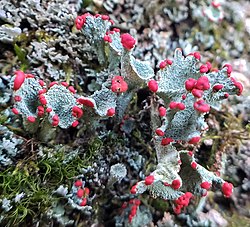| Cladonia borealis | |
|---|---|
 | |
| Scientific classification | |
| Kingdom: | Fungi |
| Division: | Ascomycota |
| Class: | Lecanoromycetes |
| Order: | Lecanorales |
| Family: | Cladoniaceae |
| Genus: | Cladonia |
| Species: | C. borealis |
| Binomial name | |
| Cladonia borealis S.Stenroos (1989) | |
Cladonia borealis, commonly known as the boreal cup lichen, [2] is a species of lichen in the genus Cladonia . [3]
